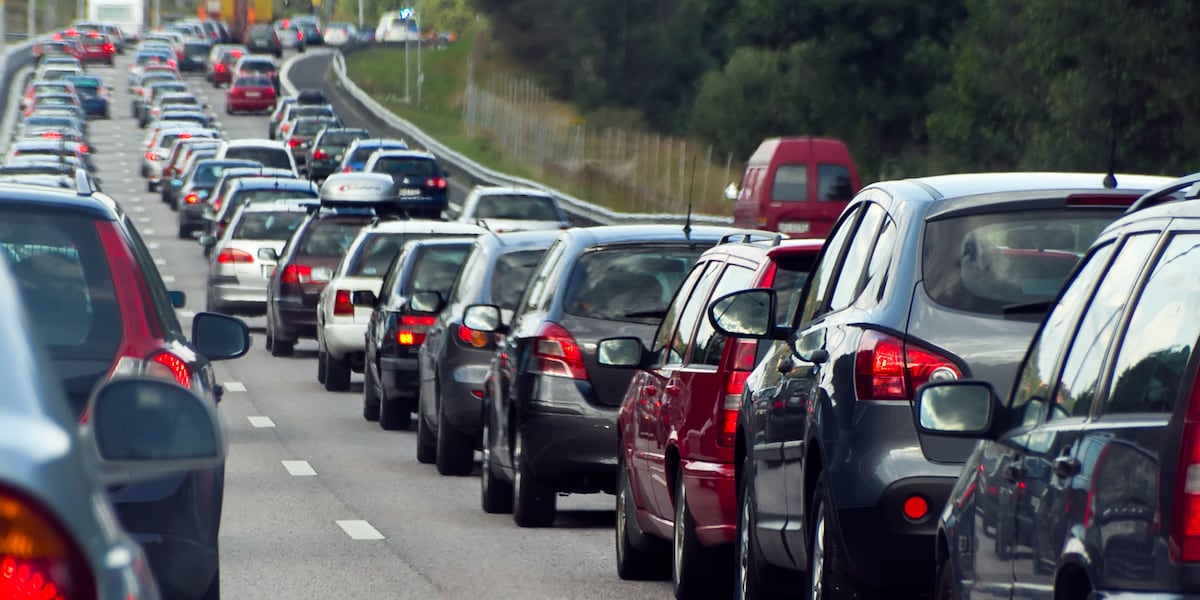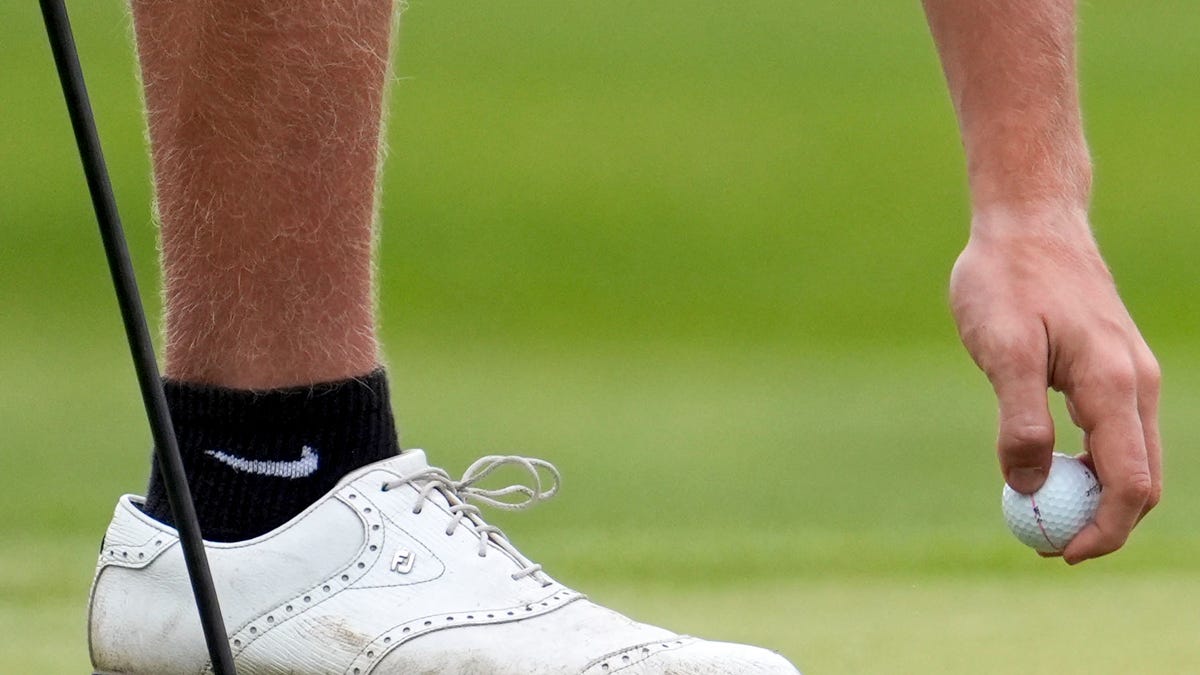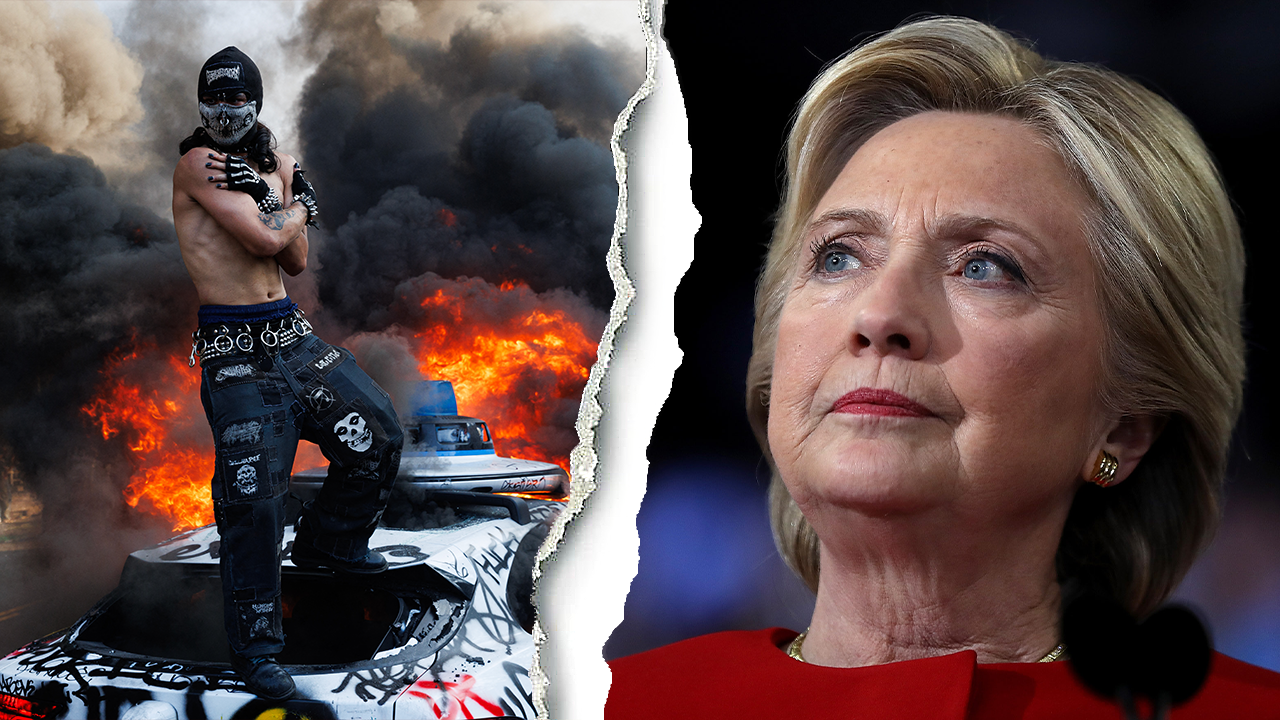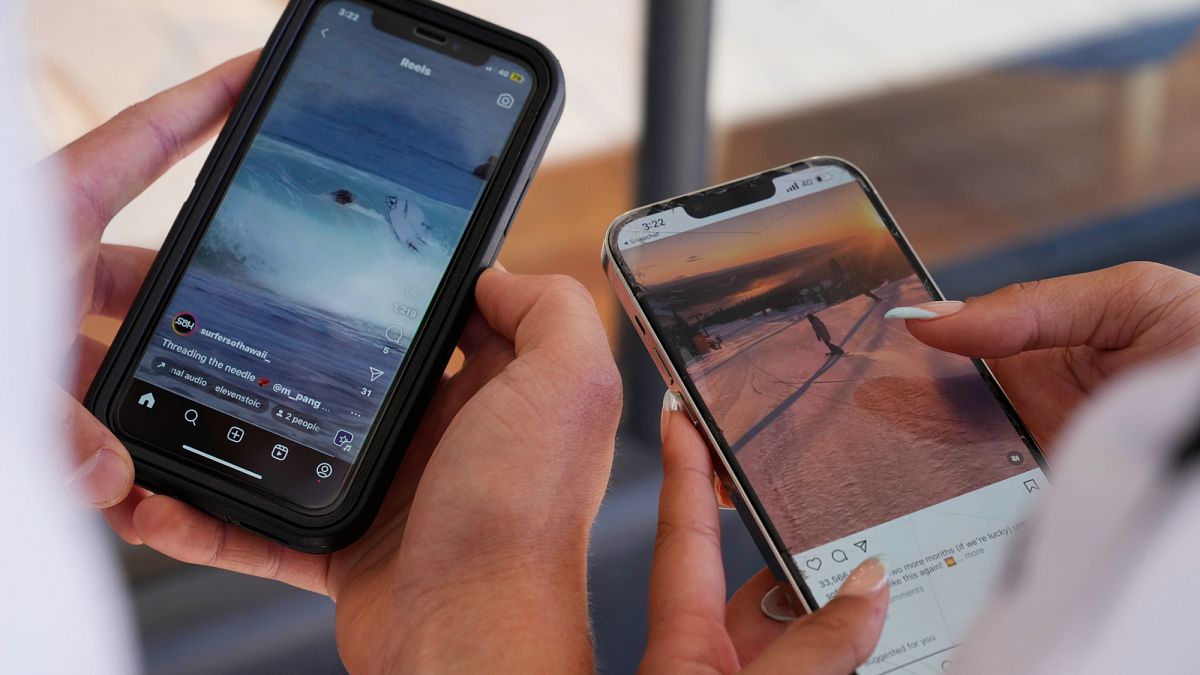Washington, D.C
Gun shops that sold weapons trafficked into Washington, DC, sued by nation's capital and Maryland
WASHINGTON (AP) — Three gun shops that sold nearly three dozen firearms to a man who trafficked the weapons in and around Washington, D.C., are facing a new lawsuit jointly filed Tuesday by attorneys general for Maryland and the nation’s capital.
At least nine of those guns have now been found at crime scene and or with people wanted on warrants for violent offenses, D.C. Attorney General Brian Schwalb said. Many of the others are still unaccounted for.
“Our city is being flooded with illegal weapons,” he said. “All three of these stores ignored the red flags.”
The stores are accused of failing to respond to warning signs that the guns would be sold to other people, including bulk purchasing and repetitive purchases, known as straw purchasing, according to the lawsuit filed with the gun safety group Everytown Law.
“Many of us watch the news and we wonder where all these guns are coming from,” said Maryland Attorney General Anthony Brown. “Now we have part of the answer.”
The lawsuit is the first to be filed jointly and comes after other civil suits against gun shops filed around the country, including New Jersey, Minnesota, Chicago and Philadelphia. Kansas City also settled a suit last year against a gun dealer accused of ignoring evidence that guns were being sold illegally.
Washington, D.C., has struggled with gun violence in recent years. The nation’s capital saw its highest number of homicides in more than three decades last year, and more than 90% of those were carried out with firearms, the suit states.
Schwalb said that the supply of weapons is fueled partly by straw purchasing. About 95% of guns recovered in Washington, D.C., which has strict gun laws, originally come from nearby Maryland or Virginia, he said. While some of those are stolen weapons, more come from illegal straw sales, according to data from the Bureau of Alcohol, Tobacco, Firearms and Explosives.
The three gun shops sued Tuesday are accused of selling a total of nearly three dozen similar weapons to Demetrius Minor over a seven-month period in 2021. Nearly all were trafficked to others, including people who aren’t legally allowed to buy firearms, the suit alleges. One gun, for example, was found in a D.C. hotel room along with an illegal large-capacity magazine and another was found at the home of a stabbing suspect, the suit says.
Minor pleaded guilty to one count of dealing in firearms without a license last year in a plea deal with prosecutors and was sentenced to 18 months in prison. An attorney who represented Minor could not immediately be reached for comment.
The suit was filed against Engage Armament LLC, United Gun Shop and Atlantic Guns, Inc., all located in nearby Montgomery County, Maryland. It seeks unspecified damages and court action to halt any future straw purchases. The stores did not immediately respond to messages seeking comment.

Washington, D.C
Showers, storms possible Tuesday across DC region; Canada wildfire smoke returns Wednesday
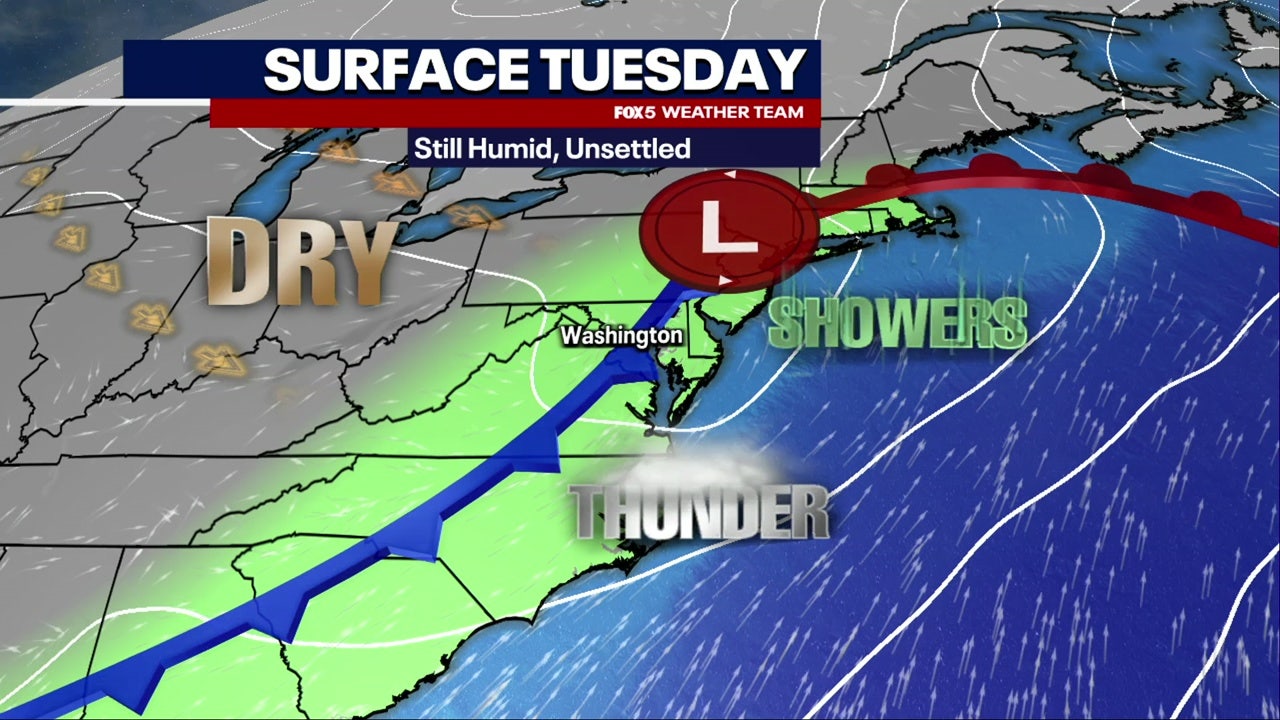
WASHINGTON – A humid and cloudy Tuesday across the D.C. area, with highs in the mid-80s and a chance of showers and thunderstorms.
Morning temperatures range from the upper 60s to low 70s, with dense air making outdoor conditions uncomfortable.
Storms and humidity
What we know:
Spotty showers may develop early, particularly south toward Fredericksburg and southern Maryland, as well as northwest near Hagerstown and parts of West Virginia.
A cold front is expected to move through later in the day, bringing relief from high humidity and reducing the risk of showers and storms.
Temperatures should peak around 84 degrees, with a chance of pop-up storms through the afternoon. Skies will clear overnight, and humidity will drop, leading to drier conditions by Wednesday.
Wildfire smoke returns
Wednesday will be less humid, though Canadian wildfire smoke is expected to return, creating hazy sunshine.
By late this week, clouds will build again as temperatures rise, bringing unsettled weather heading into the weekend.
The Source: Information in this article comes from the FOX 5 Weather Team and the National Weather Service.
Washington, D.C
‘I’ll remember for the rest of my life’: WorldPride DC comes to a close – WTOP News

WorldPride D.C. is now a wrap. The three week festival brought millions of people to the nation’s capital.
WTOP is marking Pride Month by showcasing the people, places and important issues in the LGBTQ+ communities in the D.C. area. Check back all throughout June as we share these stories, on air and online.
WorldPride D.C. is now a wrap. The three week festival brought millions of people to the nation’s capital.
On the last day of the festival, WTOP spoke to both D.C.-area residents and people who traveled to the District to be a part of only the second WorldPride in the U.S.
“I’m loving it here!,” said Angel Creek, a first-time WorldPride attendee. The Chicago native was joined by fellow Howard University student Venus Burrell.
Creek said her favorite parts of WorldPride were the outfits, the amount of color and the small businesses who had tents at the festival.
One D.C. business that once again was turning heads at the festival was Jimmy Trendy. Owner Jaime Quintero told WTOP that as a local business owner, he felt a duty to support the community and be there.
“This year has been amazing, because it’s WorldPride,” Quintero said.
The three week festival has been two-and-a-half years in the making thanks to the work from the Capitol Pride Alliance, which produced WorldPride.
Ashley Smith, board president of Capital Pride Alliance, told WTOP that 500 volunteers helped with the three week festival.
“The volunteers, the staff, the board, the whole nine, really trying to pull all this together, and our partners, that’s the only way we were able to do it,” Smith said Saturday.
One of the partners was the Mayor’s Office of Lesbian, Gay, Bisexual, Transgender and Questioning Affairs and its director, Japer Bowles.
Social media influencer Jose Romero, known as @DCHomos, who’s also marketing executive producer for Capital Pride Alliance, said he was impressed with the D.C.-area’s LGBTQ+ community, who lent a helping hand.
“The new volunteers, so many people that haven’t volunteered before, are here, welcoming the world and making this happen,” Romero said.
One of those welcomed was Devin Plant, who traveled with friends to join the celebration in D.C.
“You don’t have anything like this in Maine,” Plant said. “I think we have one singular gay bar in the whole state.
Plant joked that there are so few gay people in his hometown Bangor, that if he opens a dating app, he knows everyone on it.
This was Plant’s first trip to D.C. since he was in middle school.
“This historic event is probably something that I’ll remember for the rest of my life,” Plant said.
Another thing Plant said he won’t forget for a while is the sunburn he received during the parade, joking that there isn’t as much sun in Maine.
This page contains a video which is being blocked by your ad blocker.
In order to view the video you must disable your ad blocker.
Parents explain why they bring their children to WorldPride
One of the most impressive displays during the parade, which had 300 groups marching, was a 1,000-foot Pride Flag — said to be the world’s largest.
D.C.-area resident Allison Moody, who helped carry the giant Pride Flag, said it was stitched by the original creator of the Pride Flag, Gilbert Baker.
So, how big was the parade’s crowd size?
Smith said he had received estimates of 1.5 million attendees observing the parade as it moved along 14th Street and Pennsylvania Avenue NW. The streets are much bigger than the traditional route though D.C.’s Dupont neighborhood.
Last year, the parade used the same route as a test run for this year’s WorldPride — and it seems like this new pride route is permanent.
“There may be some changes to it slightly, but we’ll try to keep it the same route as much as
we can,” Smith said.
Get breaking news and daily headlines delivered to your email inbox by signing up here.
© 2025 WTOP. All Rights Reserved. This website is not intended for users located within the European Economic Area.
Washington, D.C
Las Vegas Joins with Atlantic City, Los Angeles, San Francisco, Washington DC, Biloxi, and New York as Trump Slump Devastates Tourism, Wrecks Casino Profits, and Guts Hotel Jobs, Here is a Very Alarming Report – Travel And Tour World
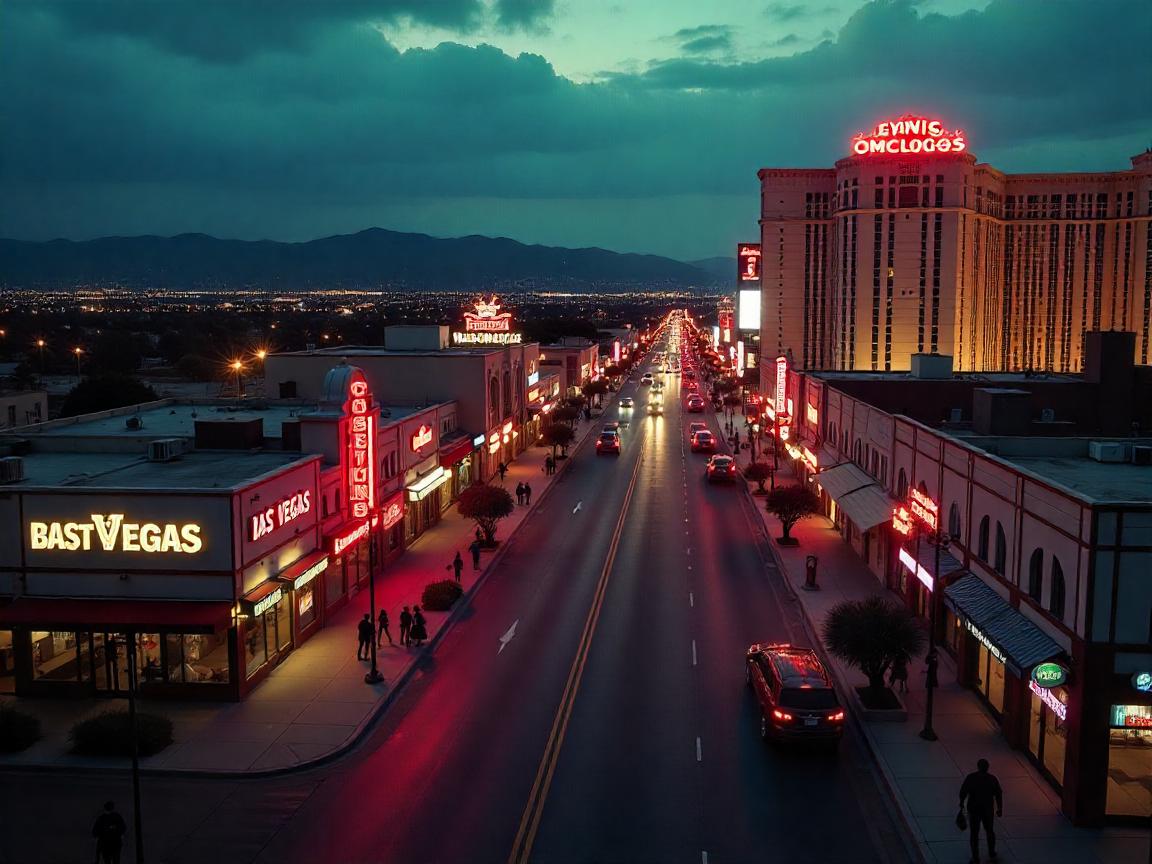
Monday, June 9, 2025
Las Vegas, once the unstoppable heartbeat of American entertainment, is now staggering—joining Los Angeles, San Francisco, Washington D.C., and New York City in a brutal decline. The latest data paints a grim picture: the Trump Slump is no longer a whispered concern. It’s a full-blown crisis. Tourism numbers are crashing. Casino profits are being wrecked. Hotel jobs are getting gutted at an alarming pace.
This isn’t just another market hiccup. It’s a seismic shift, and it’s hitting fast and hard. Las Vegas, which once danced in neon glory, is now blinking under pressure. Meanwhile, Los Angeles is losing footfall, San Francisco is watching its hotels go half-empty, Washington D.C. is suffering from thinning tour groups, and New York City is bleeding international traffic. These powerhouse cities are buckling.
What makes this even more shocking is the synchronized collapse across multiple major metros. One would expect Las Vegas to hold the line with its casino cash flow, or New York to hold strong with its global pull. But no. The slump is spreading like wildfire.
The Trump Slump is doing more than just bruising egos—it’s ripping through revenue streams. Tourism boards are scrambling. Hotels are slashing staff. Casinos are falling eerily quiet.
A new report confirms it all, and the findings are deeply unsettling. How bad is it really? Why now? And who’s next?
This isn’t just a downturn. This is a devastating reckoning. And what happens next could change the U.S. travel industry forever.
America’s Casino Cities Face Rough Odds as Travel and Tourism Get Hard Hit in 2025
America’s legendary casino cities are facing a losing streak in 2025. Travel and tourism, the lifeblood of these destinations, have taken a hard hit—and the cracks are beginning to show across Las Vegas, Atlantic City, Reno, Biloxi, Tunica, Lake Charles, New Orleans, Detroit, Black Hawk, and Philadelphia.
Las Vegas, the crown jewel of casino tourism, is seeing a dramatic slowdown. Packed casino floors and glittering lights are dimming under the pressure of fewer flights, rising costs, and global uncertainty. Hotel rooms sit empty as travel demand weakens, and the Strip’s once-pulsing energy feels noticeably slower.
Atlantic City isn’t faring much better. The East Coast casino hub has seen a dip in visitors as inflation curbs spending and entertainment budgets shrink. Its iconic boardwalk and historic casinos like Borgata and Tropicana now face quieter seasons, with tourism getting hard hit.
Reno, known as the “Biggest Little City in the World,” is also showing signs of stress. Casino traffic has dropped, and fewer Californians are making weekend gambling trips. In Biloxi and Tunica, two Mississippi casino cities that once thrived on Gulf Coast and Memphis-area travel, hotels and gaming floors are operating well below capacity.
Meanwhile, Lake Charles and New Orleans in Louisiana are feeling the pain too. As fewer visitors flock to resorts like Golden Nugget or Harrah’s New Orleans, the tourism slump deepens. Detroit’s casino industry, including MGM Grand and MotorCity Casino, faces shrinking foot traffic, and its downtown economy feels the impact.
Even in scenic casino towns like Black Hawk and Central City in Colorado, where travelers used to combine mountain views with gambling getaways, the slowdown is undeniable. Philadelphia, a rising urban gambling hotspot, is now scrambling to recover from sharp tourism drops that have hit its casino revenue hard.
From coast to coast, casino cities are facing a reckoning. Travel is down. Tourism is hard hit. And the once-booming casino sector is suddenly rolling the dice on recovery.
Las Vegas Faces Economic Crossroads as Tourism Slump Guts Casino Jobs and Hotel Revenue
Las Vegas, long celebrated as the mecca of nonstop excitement, is now facing a painful tourism reality. Visitor numbers have dropped sharply. The buzz of casino floors is fading. And behind the curtain of neon lights, the people powering the city—its dealers, hotel workers, and hospitality staff—are feeling the sharp edge of this downturn.
In April 2025, Las Vegas reported a 5.1% year-over-year drop in tourist visits. That decline may appear small, but in a city that lives and breathes on consistent high-volume foot traffic, the impact is severe. Every percentage point lost ripples across hotel corridors, casino pits, and service jobs that depend on steady crowds.
Casino Tables Go Quiet as Layoffs Begin
Some of the Strip’s largest resorts have quietly begun trimming their workforce. Casino dealers—often the frontline ambassadors of Las Vegas nightlife—are being laid off in clusters. With fewer players occupying tables, their positions have become increasingly expendable. Fontainebleau and Resorts World are among the first properties to cut staff in response to the declining traffic.
Thousands of hospitality jobs have been lost over the past year. As demand slumps, casinos are seeking leaner operations. Automation is one of their go-to solutions. More venues are turning to electronic table games and digital betting interfaces, which reduce the need for trained dealers. The charm of human interaction is giving way to LED screens and self-serve terminals.
Economic Strain Spreads Across the Strip
The numbers paint a stark picture. The Las Vegas metro area ended 2024 with an unemployment rate of 5.9%—the highest among all major U.S. metro regions. This isn’t just a local hiccup. It’s a structural problem gripping the city’s core economic driver: tourism.
Travelers are simply not spending the way they used to. Rising airfares, shrinking discretionary budgets, and global economic uncertainties are all taking a toll. International tourism, once a key pillar of Las Vegas’ diverse visitor base, continues to shrink due to lingering geopolitical tensions and costly long-haul flights.
Hotel occupancy dropped 1% overall in April, with downtown hotels experiencing a steeper 2.6% decline. This erosion in guest volume compounds losses for restaurants, entertainment venues, and local attractions that thrive on tourist dollars.
Wages Flatline While Cost of Living Soars
Even those lucky enough to keep their jobs face an uphill battle. In 2024, the average hourly wage for casino dealers in Nevada stood at $19.96. That’s barely above the national average of $19.25. For a state that is globally synonymous with casino culture, this wage stagnation is glaring. Nevada doesn’t even rank among the top five states for dealer pay, highlighting a growing mismatch between brand power and worker compensation.
Meanwhile, Las Vegas’ cost of living continues to climb. Rent, gas, and grocery prices have surged, putting added pressure on workers in an already stressed sector. Fewer benefits, reduced shifts, and limited job security are becoming the norm.
The Dealer Pipeline Dries Up
The fallout extends to training institutions. Once booming with hopefuls ready to learn the ropes of blackjack, poker, and roulette dealing, dealer schools are now seeing enrollment nosedive. Many who would once relocate to Las Vegas in search of quick career starts are reconsidering. The opportunity promise is dimming. The dream of quick tips and high-stakes tables is now shadowed by uncertainty.
Without a fresh talent pipeline, even a future rebound could be hindered. The infrastructure of skill development is faltering just as demand for adaptability rises.
Industry Adapts, But at What Cost?
Casino operators are reacting—but not always in ways that safeguard livelihoods. Budget tightening is rampant. Shareholder reports show weakened earnings across several properties, and cost-cutting is the prevailing strategy. Capital expenditures are shifting toward automation and digital engagement. Unfortunately, that often means less human capital and more machines.
Some properties are opting to scale back live entertainment or reduce gaming floor hours. These subtle shifts further discourage extended visitor stays and lower ancillary spending on food, shows, and nightlife.
What This Means for the Future of Las Vegas
The Las Vegas tourism ecosystem is at a tipping point. The convergence of economic pressure, automation, and waning visitor demand could trigger long-term structural changes. The danger isn’t just in job losses—it’s in eroding the unique human experience that made the city iconic.
The Strip, once a symbol of limitless energy, now reflects something more sobering: vulnerability. Without decisive strategic shifts, including improved wages, targeted tourism incentives, and greater international outreach, the industry may struggle to rebound fully.
Travel authorities, city planners, and hospitality leaders must act swiftly. Investment in infrastructure, diversified tourism products, and fair employment practices are no longer optional—they’re essential for survival.
The world is watching what Las Vegas does next. Will it reinvent itself again, as it has many times before? Or will it fade into a high-tech but soulless shell of its former self?
For now, the cards are still in the air.
Tags: casino jobs, clark county, dealer schools, Downtown Las Vegas, fontainebleau, Las Vegas, Nevada, Nevada casinos, Resorts World, The Strip, Travel Economy, travel inflation, travel layoffs, U.S. metro unemployment, U.S. tourism trends

-

 West4 days ago
West4 days agoBattle over Space Command HQ location heats up as lawmakers press new Air Force secretary
-

 News1 week ago
News1 week agoTrump administration continues to target international students. What to know and what could be next.
-

 Indianapolis, IN1 week ago
Indianapolis, IN1 week agoCaitlin Clark among stars at Indiana Pacers vs. New York Knicks Game 6
-
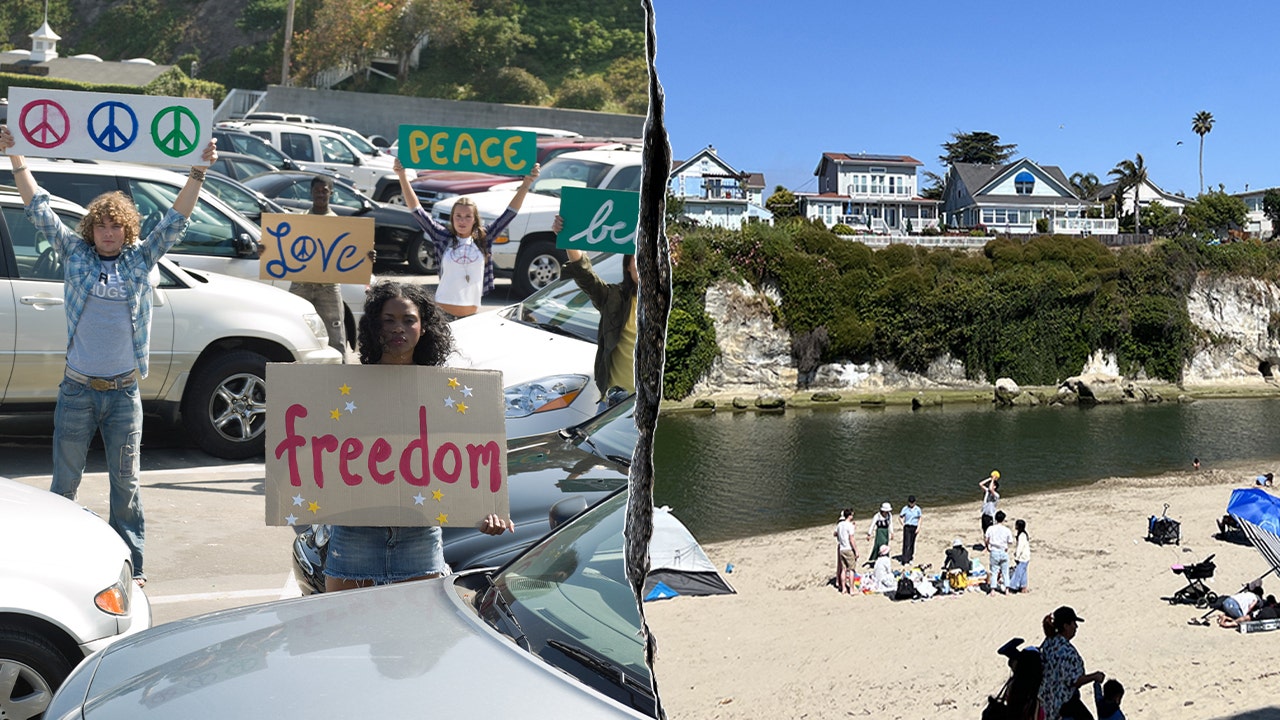
 Politics1 week ago
Politics1 week agoCalifornia beach ‘Resist!’ protest pushes ‘kindness’ while calling to ‘86 47’ in anti-Trump message
-
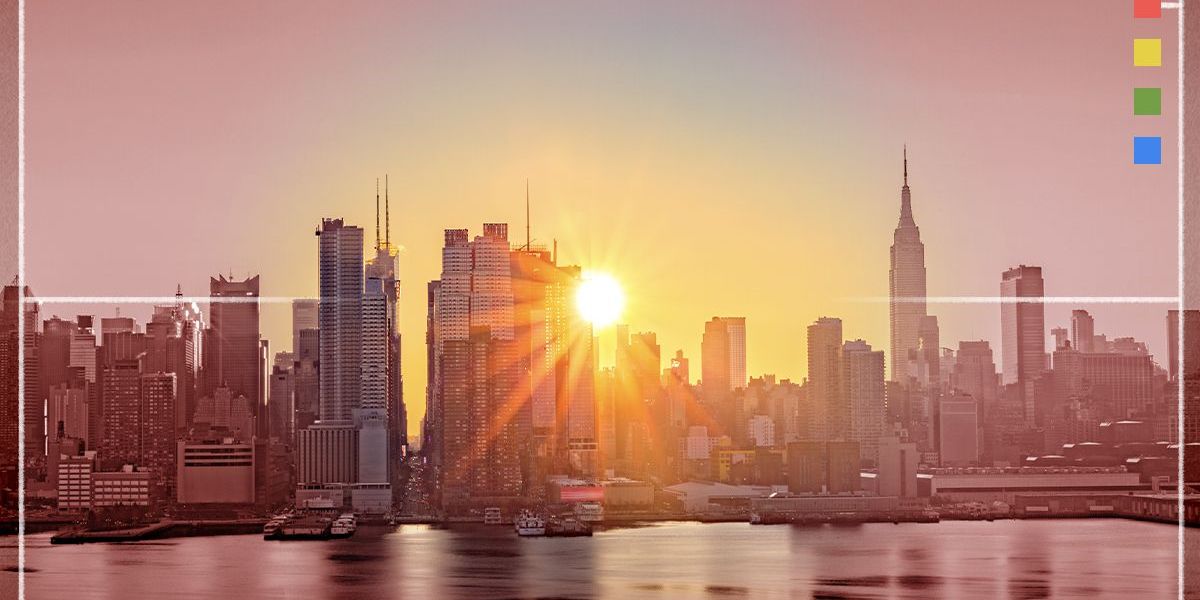
 Alaska1 week ago
Alaska1 week agoInterior Plans to Rescind Drilling Ban in Alaska’s National Petroleum Reserve
-

 Education1 week ago
Education1 week agoVideo: Inside Trump’s Attack on Harvard
-

 Technology1 week ago
Technology1 week agoMicrosoft will finally stop bugging Windows users about Edge — but only in Europe
-
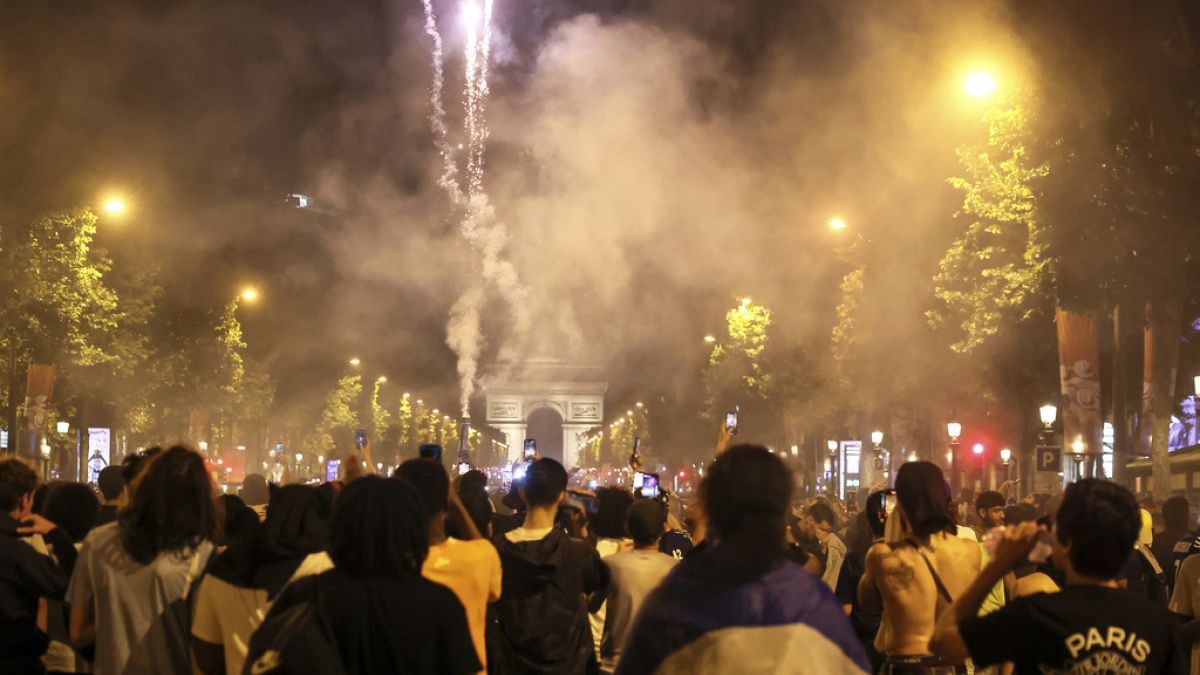
 World1 week ago
World1 week agoTwo dead, hundreds arrested during PSG Champions League celebrations

